High humidity in bathrooms provides the best conditions for the growth of mold and mildew and may even damage some surfaces such as wood. While having a fan or dehumidifier helps reduce the humidity levels, moisture-absorbing plants are a cheaper and greener way to do it.
The best bathroom plants that absorb moisture are the peace lily, mother-in-law’s tongue, English ivy, spider plant, Boston fern, reed palm, Zanzibar gem, bird’s nest fern, and cast iron plant. They absorb excess moisture in the bathroom thus keeping it dry and preventing mold, mildew, and bacteria.
Besides keeping your bathroom dry, most of these plants also remove impurities from the air thus keeping the indoors fresh. They require little care although you need to know how to raise each plant to keep it healthy and reap its benefits.

Best bathroom plants that absorb moisture
The 9 best plants that absorb humidity include the following:
1. Peace Lily (Spathiphyllum wallisii)
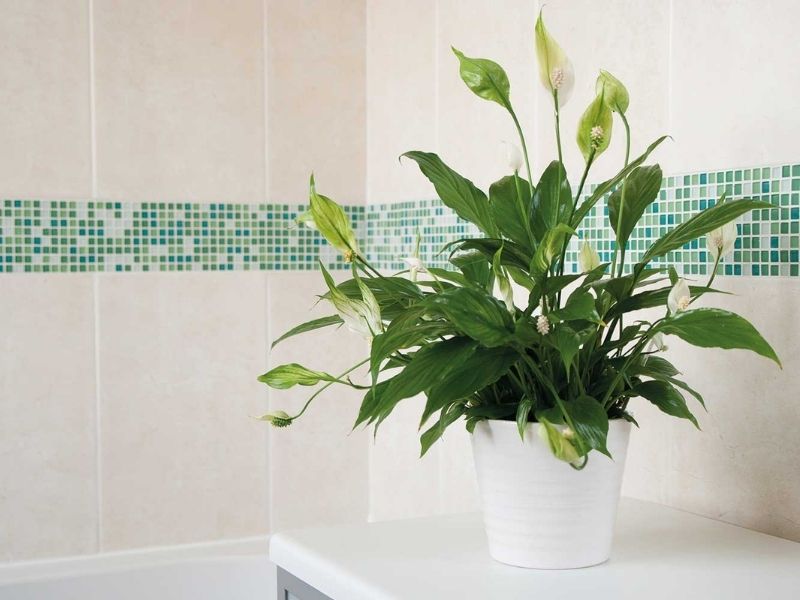
First up is the beautiful peace lily which absorbs moisture through its leaves. It’s thus well-suited to the bathroom conditions given that it needs little light like it is in the bathroom. Given that the peace lily absorbs lots of water from the air, it doesn’t require much watering.
Peace lily also absorbs toxins from the air and thus purifies the air as well. However, it’s a toxic plant when ingested. For this reason, you need to keep it away from pets and kids. Preferably, you can keep it off the ground where it’s not easy to reach.
2. Mother-In-Laws Tongue (Sansevieria trifasciata)
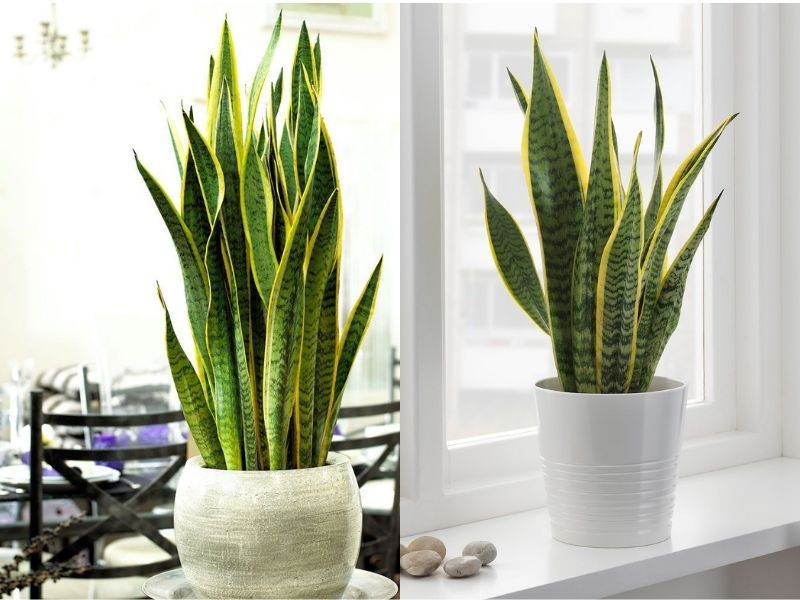
Next up is the Mother-in-Laws Tongue which has succulent blade-like leaves which absorb large amounts of water vapor from the air. Also called the snake plant, it also absorbs most household toxins found in household products. Formaldehyde, for example, is a toxin found in cleaning products and cosmetics and is easily cleared from the air by this plant.
It’s also well-suited to the bathroom conditions where there is low light and high levels of humidity. With the mother-in-law’s tongue, you’ll have a high humidity plant that keeps your bathroom dry and cleans the air in your home too.
3. English Ivy (Hedera helix)

Another plant that absorbs humidity and indoor toxins is the English ivy. A deep green plant that spreads around when planted, the English ivy is so efficient at absorbing moisture from the air that you’ll rarely see mold (including pink mold) and mildew growing in your bathroom once you plant it there.
Like other moisture absorbing plants, English ivy thrives in low-light conditions like the bathroom. As long as you keep its soil moist, English ivy will thrive and keep your bathroom dry. Given that it spreads, you can grow it in hanging baskets.
4. Spider Plant (Chlorophytum comosum)

With its smooth arching leaves, the spider plant is both beautiful and efficient in keeping your bathroom dry and safe. Besides being efficient at absorbing indoor moisture, the spider plant absorbs more than 90% of all indoor pollutants. It also needs minimal maintenance hence a great bathroom plant. Such a plant is great if you leave your towels on a towel bar inside the shower as it helps reduce the moisture in it.
5. Boston Fern (Nephrolepis exaltata)
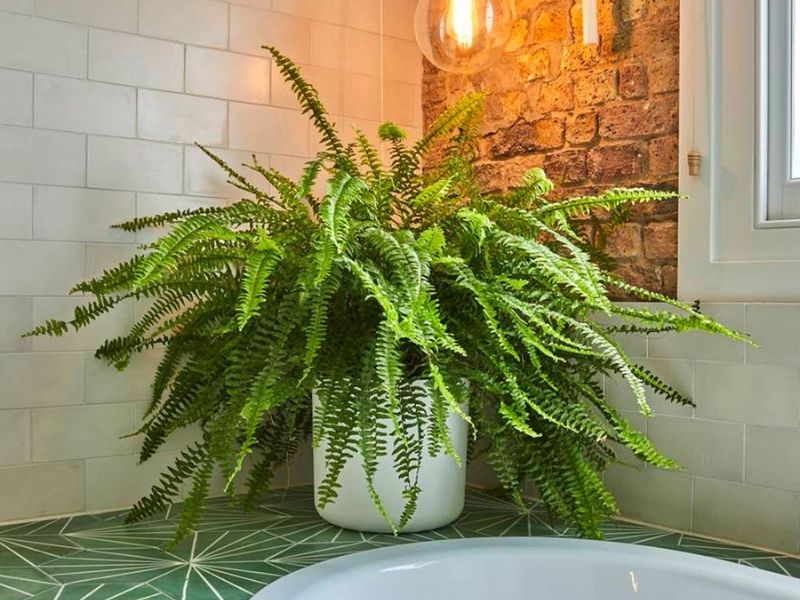
The Boston fern has small beautiful leaves and thrives in areas with indirect sunlight such as your bathroom. It absorbs large amounts of moisture keeping your bathroom’s humidity levels balanced.
This fern, however, requires constant humidity and may need artificial misting especially during the winter when the air is dry. Besides that, you should keep it away from direct sunlight which can damage it.
6. Reed Palm (Chamaedorea spp)
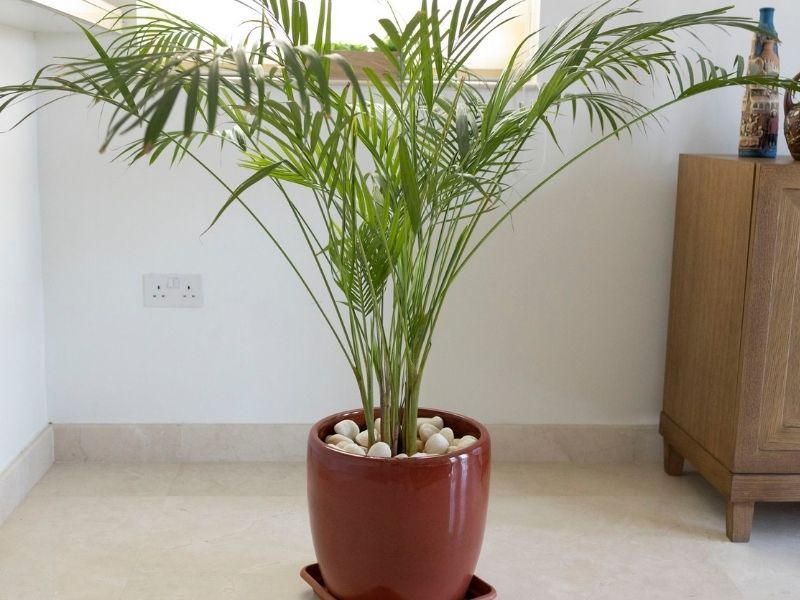
The reed palm looks like a miniature palm tree and thrives in hot and humid areas like the bathroom. Besides that, it absorbs high amounts of impurities thus keeping your house safe and the air clean.
With its adaptation to the low light conditions of the bathroom, the reed palm is among the best high humidity plans you can use to keep the humidity levels in your bathroom manageable. It’s a bit large hence the need to give it enough space for growth.
7. Zanzibar Gem (Zamioculcas zamiifolia)
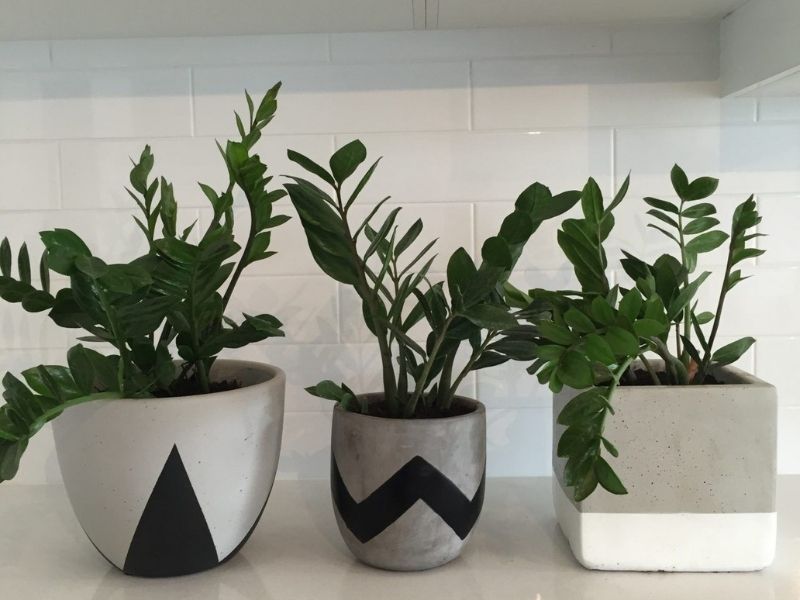
One of the toughest bathroom plants that absorb moisture is the Zanzibar gem. Also called the emerald palm, eternity plant, aroid palm, Zuzu plant or the ZZ plant, the Zanzibar gem will thrive in areas with high humidity, low light, and quick temperature changes like those in the bathroom. Better yet, you’ll only need to water it 4 times a year.
8. Bird’s Nest Fern (Asplenium nidus)
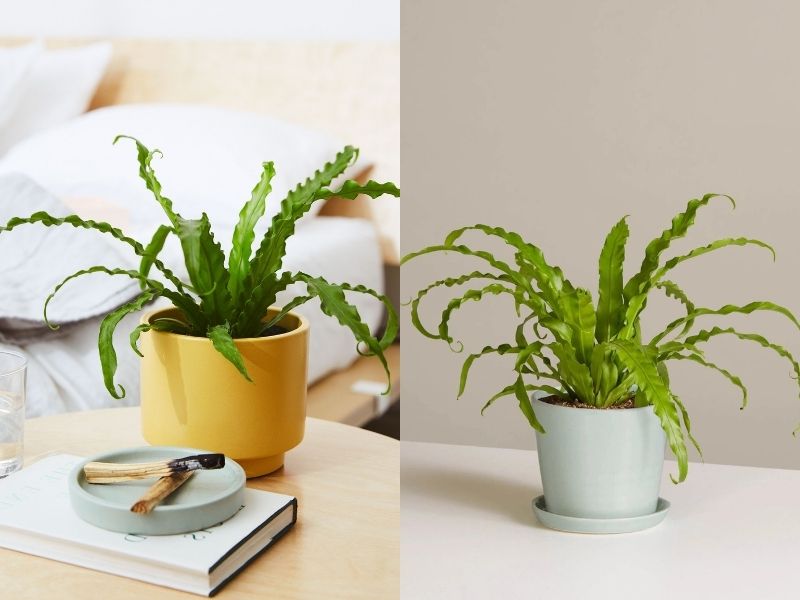
The bird’s nest fern has tentacle-like leaves and grows quite big hence the need for extra space. It thrives in low-light and high humidity areas such as the bathroom. In its natural state, it helps control the amount of moisture in the bathroom making it easy to keep at bay mold, mildew and other problems brought about by too much humidity.
9. Cast Iron Plant (Aspidistra elatior)
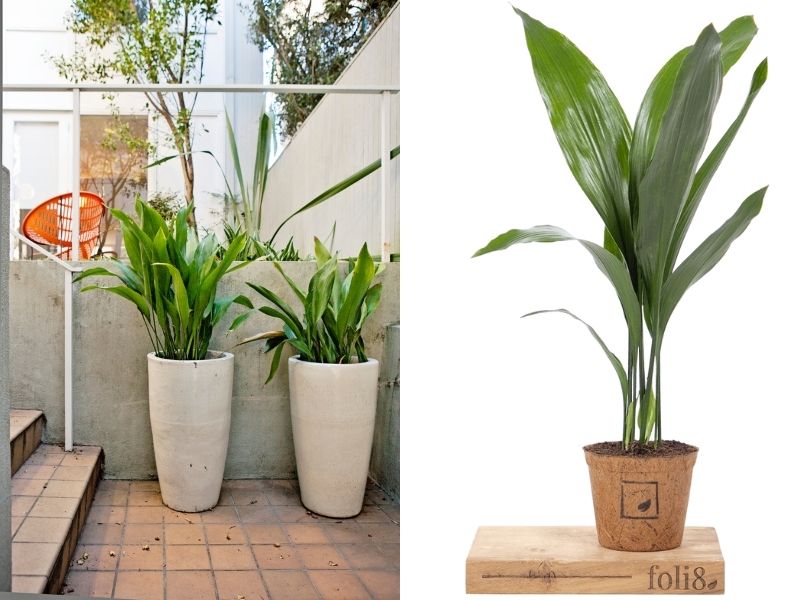
The cast iron plant is a low-maintenance plant that absorbs high amounts of moisture from the air thus helping control the humidity levels in your bathroom. It can withstand the low light, high humidity and varied temperatures in the bathroom without issues.
Since it’s a small plant, it doesn’t require a lot of extra space to grow. However, when the moisture levels go down, you will need to water it to keep its soil moist. This helps avoid losing the plant to wilting.
Other good moisture absorbing plants include pothos, baby’s tear, orchids, Tillandsia (air plant), dracaena, calathea, aloe vera, begonia, azalea, bromeliads, cyclamen, and philodendron. Plants are cheaper to maintain than dehumidifiers and add beauty to your home too. While they help you prevent mold in the shower, you can easily remove black mold from bathroom sealant and other surfaces with vinegar.
Considerations when choosing bathroom plants
The bathroom plant you choose to control the humidity levels will depend on the following aspects:
Humidity levels
The primary focus of having high humidity plants in the bathroom is to reduce the level of humidity in there. Depending on how much humidity the bathroom has, choose a plant that can withstand it and help reduce it.
If you’re alone in the house and take one shower a day, a normal humidity reducing plant will absorb enough of the moisture to keep the bathroom dry. However, if you’re a family using the same bathroom with lots of humidity lingering in the air, you should go for plants that absorb a lot of moisture to keep the bathroom dry. You can even use more than one plan if you have the space for them.
Plant toxicity and safety
Most of the plants you can use to reduce humidity in the bathroom are toxic when ingested. For this reason, consider the ones that aren’t poisonous if you have kids and pets. Otherwise, you can place the toxic plants away from the reach of the pets and kids by, for example, hanging them on the roof of the bathroom.
Temperature changes
The bathroom experiences temperature changes from high when taking a warm shower to low when taking a cold shower or in-between showers. When choosing plants for the bathroom, ensure they can withstand these sudden temperature changes to avoid killing off the plant.
Lighting available
Most bathrooms will have low levels of light hence the need to find plants that naturally thrive in such conditions. While some plants will be okay just using the amount of light in the bathroom, some may need to be supplied with a few hours of direct sunlight each day. Still, others may require that you use fluorescent light to give them enough light. Others may be damaged by direct sunlight.
Space available
Plants differ in growth habits and size and you should consider that in relation to the size of your bathroom. Some grow to be large plants while other may creep around on surfaces. If you’re limited in space, choose plants that don’t grow too big and keep the bathroom tidy.
With these aspects, you should be able to find the right plant for your bathroom. Even better, you can have several plants teaming up to clear the air and reduce moisture in your bathroom. This way, you can have a variety to spice up the look of your bathroom.
References
Stanford University Libraries. The Inside Story: A Guide to Indoor Air Quality.
Iowa State University. Care of Orchids.
University of Florida. Master Gardener Volunteers on… Mexican petunias.
